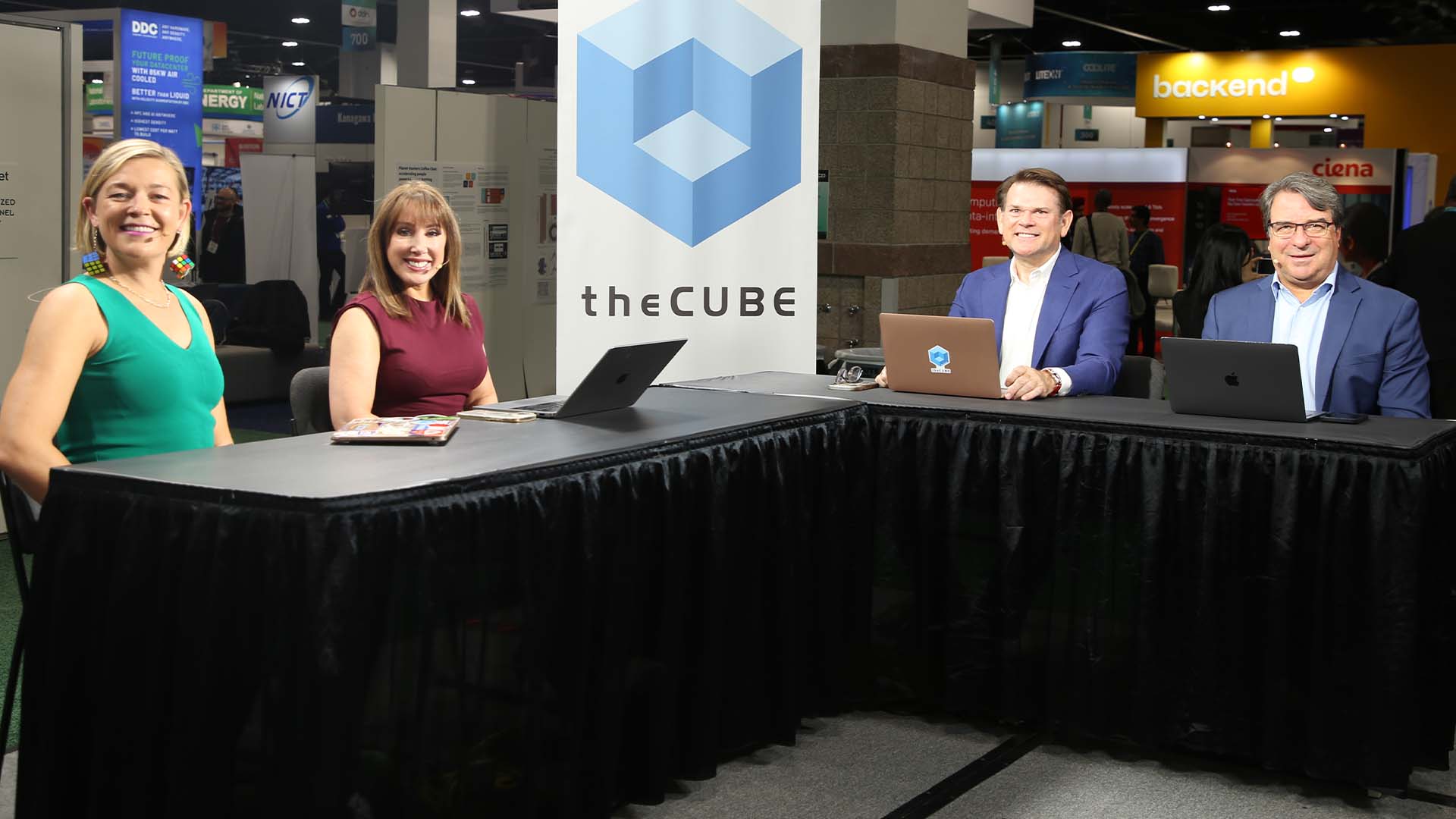 AI
AI
 AI
AI
 AI
AI
This week’s Supercomputing 2023 event aims to paint a vivid picture of an industry at the cusp of a transformative era, driven by artificial intelligence and high-performance computing. One standout theme is the palpable growth and influence of AI in the HPC sector.
“AI is the gift that’s just giving more and more energy — and hype — to this market of technical people,” said theCUBE’s John Furrier (pictured, right). “But that’s the theme of the show so far. The impact of AI to high-performance computing, and the intersection of the semiconductor players and the cloud is happening. Everything in between is going to be up for grabs for innovation.”
What appears to be a good market opportunity for rethinking the hardware mindset for modern interconnectivity, the next-gen cloud and edge computing realms are serving up a perfect storm of innovation, according to Furrier. “This is going to be a fast-changing ecosystem,” he said.
Furrier spoke with co-hosts Savannah Peterson (left), Lisa Martin (second from left) and David Nicholson (second from right) at SC23, during an exclusive broadcast on theCUBE, SiliconANGLE Media’s livestreaming studio. They discussed the collision course currently happening between the semiconductor market and cloud computing technologies, the pressure CTOs are facing to succumb to AI-driven architectures and the ways in which traditional infrastructure is shifting to meet modern demands. (* Disclosure below.)
The integration of AI with traditional computing methods and the intersection of semiconductor technology and cloud computing were hot topics. AI is not just a buzzword, but a driver of substantial market changes.
“I think that although AI was already front and center last year, we’re definitely talking more about AI this year,” Nicholson said. This shift underscores the rapid advancement and integration of AI into various aspects of computing.
The week’s event also highlights the emerging synergy between on-premises hardware and cloud operations. There is an increasing prevalence of AI applications in traditional computing structures, according to theCUBE analysts. Dell Technologies Inc., recognized for its foresight in this domain, is one such example.
“This is an opportunity for the Dells of the world to get back into the game,” said Furrier, highlighting the shift toward on-prem solutions and the potential for performance improvements in cloud operations.
A critical focus of SC23 includes the real-world application of AI and HPC technologies. Bridging the gap between theoretical models and practical implementation is vital, according to theCUBE analysts.
“It’s one thing to talk about large language models and machine learning; it’s an entirely different thing to implement it at scale in a way that matters to people outside of our nerd bubble,” Peterson said.
This sentiment was echoed throughout the discussion, with an emphasis on end-to-end workload architecture and not just isolated AI models.
The conference also is providing insights into the future directions of AI and HPC. Topics such as quantum computing — and its integration with traditional computing architectures — is vital.
“Yesterday, Boeing pointed out specifically in the presentation that there is visibility into use cases coming quickly in traditional computing architectures where quantum will add value,” said Furrier, indicating the potential transformative impact of quantum computing on the HPC landscape.
SC23 also serves as a confluence of enterprise, startups and academia. This signifies the need for diverse minds to develop algorithms for future advancements.
“It’s going to take a lot of unique minds of great diversity to write the algorithms for our collective future,” said Peterson, underscoring the collaborative nature of innovation in this field.
In terms of industry perspective, the analysts’ discussion revealed a trend where large organizations lament the lack of in-house data center capabilities, increasingly leaning toward cloud service providers. This shift raises important questions about the infrastructure choices in AI and HPC — whether to opt for GPUs, TPUs or CPUs — and how to balance training versus inference needs in AI environments.
Here’s the complete video interview, part of SiliconANGLE’s and theCUBE’s coverage of SC23:
(* Disclosure: TheCUBE is a paid media partner for SC23. Neither Dell Technologies Inc., the main sponsor of theCUBE’s event coverage, nor other sponsors have editorial control over content on theCUBE or SiliconANGLE.)
Support our open free content by sharing and engaging with our content and community.
Where Technology Leaders Connect, Share Intelligence & Create Opportunities
SiliconANGLE Media is a recognized leader in digital media innovation serving innovative audiences and brands, bringing together cutting-edge technology, influential content, strategic insights and real-time audience engagement. As the parent company of SiliconANGLE, theCUBE Network, theCUBE Research, CUBE365, theCUBE AI and theCUBE SuperStudios — such as those established in Silicon Valley and the New York Stock Exchange (NYSE) — SiliconANGLE Media operates at the intersection of media, technology, and AI. .
Founded by tech visionaries John Furrier and Dave Vellante, SiliconANGLE Media has built a powerful ecosystem of industry-leading digital media brands, with a reach of 15+ million elite tech professionals. The company’s new, proprietary theCUBE AI Video cloud is breaking ground in audience interaction, leveraging theCUBEai.com neural network to help technology companies make data-driven decisions and stay at the forefront of industry conversations.